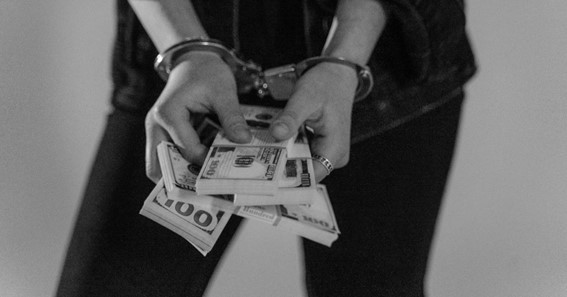Money plays a vital role in our everyday lives, and this is no different for those who are incarcerated in prison. Access to financial resources is essential for inmates to purchase daily necessities, communicate with loved ones, and secure legal representation. In this article, we will explore how money works in prison, including the various ways inmates can access and use funds.
Sources of Money in Prison
Inmates have limited options for earning money while they are incarcerated. In some cases, inmates may be able to participate in educational or vocational programs that provide them with additional opportunities to earn money. However, those who can find work in prison typically earn very low wages—often less than $1 per hour. The primary source of money for inmates is therefore financial support from outside sources, such as family members and friends.
To access funds in prison, inmates typically have one or more of the following options:
Inmate trust account: Most prisons maintain an inmate trust account that is used to manage an inmate’s funds. Family members and friends can deposit money into an inmate’s account by sending a money order or cashier’s check through the mail or using an online money transfer service. Inmates can then use these funds to purchase items.
Release account: Inmates who are close to being released may have access to a release account, which is typically used to hold funds that will be provided to the inmate upon their release. This can include funds from wages earned while in prison, as well as funds deposited by family members and friends.
Inmate banking services: In some cases, inmates may be able to use banking services that are provided by third-party vendors. These services may allow inmates to deposit funds into an account, access funds through a debit card, or send money to family members outside of prison.
In order to send money to inmates, friends and family members have to first locate the relevant prison facility and determine the specific process for sending funds, as each facility may have its guidelines and restrictions. For instance, if an inmate is located in Greenville County, loved ones can use a Greenville County inmate search to find out how to deposit money into the inmate’s account. Note that inmates may face restrictions on the amount of money they can receive or hold in their accounts.
Uses of Funds in Prison
Inmates use funds in prison for a variety of purposes, most commonly to purchase commissary items to maintain a basic level of comfort. The commissary is a prison version of a convenience store, where inmates can purchase items such as snacks, hygiene products, and writing materials. Inmates can also rent or purchase music or books and other enrichment items from the commissary if allowed by the facility.
In addition, funds are also used to make phone calls or send emails to loved ones. Phone calls can be expensive, so having money in an account can help inmates stay in touch with loved ones outside of prison. Finally, inmates who need legal representation may need to pay for legal expenses. This can be a significant expense but is often necessary to navigate the legal system and ultimately secure a release from prison.
Challenges of Managing Money in Prison
Managing personal finances in prison can be challenging. First, inmates may have limited access to financial resources. Second, there are multiple restrictions on the types of financial transactions that inmates can engage in. For example, inmates are not allowed to have bank accounts, credit cards, or access to common online financial services. Third, some prison facilities and platforms charge fees for financial transactions or services.
The question of whether there should be a money system in prison is a complex one with arguments on both sides. On one hand, having a money system in prison can provide inmates with a means of obtaining necessities and maintaining some level of autonomy and control over their lives. Access to money can also enable inmates to communicate with loved ones, secure legal representation, and make preparations for their release.
On the other hand, there are concerns that a prison money system can lead to inequality, corruption, and exploitation. Inmates who have access to financial resources may be more likely to receive preferential treatment or engage in illicit activities. Additionally, the limited access to financial resources may contribute to a sense of hopelessness or desperation among inmates who are unable to secure financial support from outside sources.
Some argue that alternative systems, such as a bartering system or a system in which daily necessities are provided to inmates for free, could be implemented in place of a traditional money system. These alternatives could help mitigate some of the negative effects of a money system, while still providing inmates with a means of obtaining additional items that improve their quality of life and enhance autonomy.
Ultimately, the decision of whether to have a money system in prison is up to policymakers and prison officials. Perhaps we should consider alternative systems that could better serve the needs of inmates while promoting fairness and equality. In the meantime, inmates and their loved ones should familiarize themselves with the financial regulations that govern their facility, so they can make informed decisions about managing their finances.
